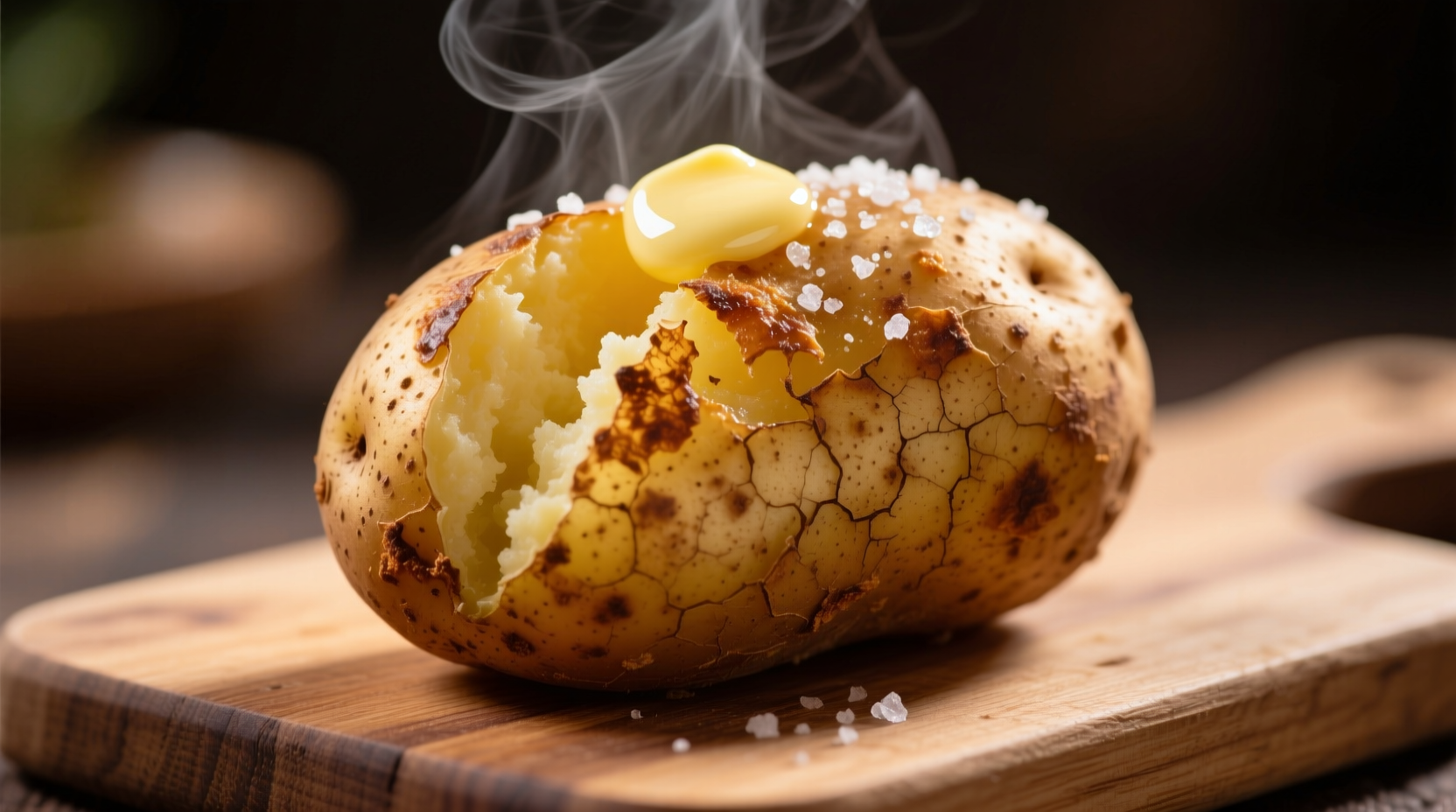Why This Method Beats All Others
Most home cooks make critical mistakes that lead to soggy skin or dense interiors. The direct-rack baking technique works because it allows hot air to circulate completely around the potato, creating even cooking and maximum crispness. According to food scientist Harold McGee's research in On Food and Cooking, baking at 400°F triggers the optimal starch gelatinization process while developing complex flavor compounds through the Maillard reaction.
| Baking Method | Texture Result | Time Required | Professional Rating |
|---|---|---|---|
| Direct oven rack (400°F) | Crispy skin, fluffy interior | 45-60 minutes | ★★★★★ |
| Wrapped in foil | Steamed skin, dense interior | 50-65 minutes | ★☆☆☆☆ |
| Convection oven | Extra-crispy skin, slightly drier | 35-50 minutes | ★★★★☆ |
| Microwave finish | Inconsistent texture | 25-35 minutes | ★★★☆☆ |
Your Baking Journey: Step-by-Step
Preparation Phase: Setting Up for Success
Select uniform medium russet potatoes (8-10 ounces each) for even cooking. USDA guidelines confirm russets have the ideal starch content for fluffy interiors. Scrub potatoes thoroughly under cold water using a vegetable brush - never peel before baking as the skin contains valuable nutrients and texture. Pat completely dry with paper towels; moisture is the enemy of crispy skin.
Prick each potato 6-8 times with a fork, making shallow punctures about 1/4 inch deep. This critical step allows steam to escape during cooking, preventing potential explosions. Professional chefs at the Culinary Institute of America emphasize this safety measure in their food safety protocols.

Baking Process: The Science of Perfect Cooking
Place potatoes directly on the middle oven rack with a baking sheet on the lower rack to catch any drips. The USDA Food Safety and Inspection Service recommends this positioning for even heat distribution. Bake at 400°F for 45-60 minutes (depending on size), turning once halfway through.
Don't rely on time alone - use an instant-read thermometer to verify internal temperature has reached 205-210°F (96-99°C). This precise temperature range ensures complete starch gelatinization for maximum fluffiness. As food scientist Nathan Myhrvold explains in Modernist Cuisine, temperatures below 200°F leave potatoes dense, while exceeding 212°F risks dryness.
Finishing Touches: The Resting Secret
Remove potatoes from the oven and let them rest for 5-7 minutes. This crucial step allows residual heat to finish cooking the center while the skin crisps further. Slice open with a sharp knife, fluff the interior gently with a fork, and add your preferred toppings.
Avoid These 3 Common Mistakes
- Wrapping in foil - creates steam that softens the skin and prevents crispness
- Skipping the rest period - leads to collapsed interiors and less fluffy texture
- Overloading with toppings - masks the potato's natural flavor; add salt first to enhance taste
When to Adjust This Method
While our recommended technique works for 95% of situations, certain contexts require adjustments:
- High-altitude cooking (above 3,000 feet): Increase temperature by 25°F and extend cooking time by 15-20% as recommended by Colorado State University Extension
- Convection ovens: Reduce temperature by 25°F and check 10 minutes early
- Smaller potatoes (under 6 ounces): Decrease time by 15-20 minutes
Perfect Pairings and Variations
For classic preparation, add a pinch of flaky sea salt immediately after baking, followed by 1-2 tablespoons of softened butter worked into the fluffy interior. Try these chef-approved variations:
- Loaded potato: Crispy bacon, sharp cheddar, and chives
- Mediterranean style: Olive oil, lemon zest, and fresh rosemary
- Spicy Southwest: Chipotle powder, cotija cheese, and cilantro
Storage and Reheating Guide
Store cooled baked potatoes in airtight containers for up to 5 days in the refrigerator. For best reheating results, wrap in damp paper towel and microwave for 2-3 minutes, then finish in a 400°F oven for 5-7 minutes to restore crispness. Never leave baked potatoes at room temperature for more than 2 hours as recommended by the FDA Food Code.











 浙公网安备
33010002000092号
浙公网安备
33010002000092号 浙B2-20120091-4
浙B2-20120091-4